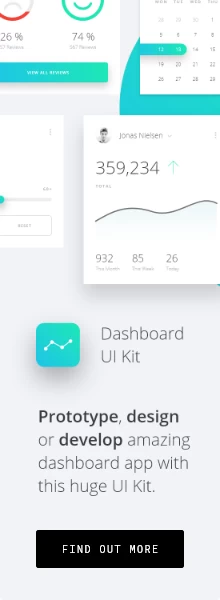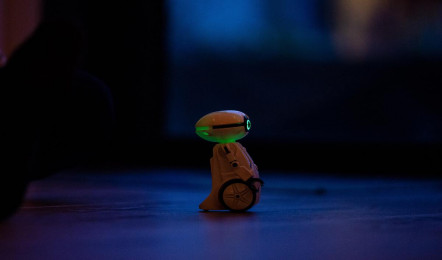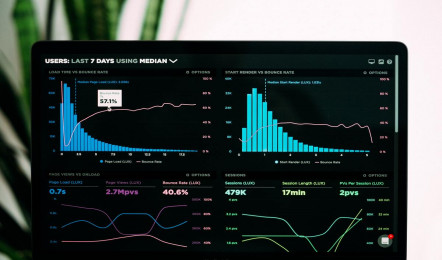Designers & Developers: Top 5 Collaboration Tips
Tue.22.09.2020 BY
In modern IT companies, designers and developers are two sides of the same coin. They complement each other, and only by working together can they create a stunning piece of software. However, this collaboration can be hindered by a number of things. In this post, we will cover some of the main issues encountered in their work cycle and try to offer some ideas for overcoming those obstacles.
#1 Talk it out
Most problems emerge from miscommunication. Communication is key to any healthy relationship and is the case with this one. Designers and developers focus on different things, but their end goal is the same - to create amazing software. They approach this goal from different angles and sometimes have different visions as per how to make something happen.
Designers often lack the technical knowledge necessary to see the nuances of coding. Sometimes it just so happens that designers envision designs that simply cannot be implemented because of technical constraints. This can be a hurdle, and the only solution to such an issue is to talk about the problem. Often, workarounds are simple and easy to implement while they offer much of the same functionality.
On the other hand, sometimes, the issue is with the developers. As engineers, they often try to optimize everything to perfection. Sometimes that optimization leads to deliberately changing or even altogether abandoning design solutions. It’s easy to see how this might be an issue. Once again, the solution is to talk about the issues. Once the middle ground is found, it gets easy to make compromises and create stunning software.
#2 Throw your ego out the window
Designers sometimes create what they think are excellent designs, and after handing their designs to developers, they learn that the opinions are not shared. We are all different, and as the good old saying goes, beauty indeed is in the eye of the beholder. It can sometimes happen that what one person finds beautiful, another person does not. If the team ends up not liking the design, designers should not feel personally attacked. These things happen, and especially if the team offers ideas for improvements, it should be back to the drawing board for the designer, without trying to force the design by all means.
Ego can go both ways. Developers too often feel like they can create a feature that will be the next big thing, but it ends up not really fitting in in the design. The same thing goes, instead of trying to force it, simply forgo it and focus on something new that will actually be of use.
#3 Change is inevitable
Developers like certainty. When they create a piece of software, the ideal outcome is the perfect software that never fails and never changes. However, designers must keep up with the trends, otherwise, the product will suffer. Nobody wants to have an outdated-looking product, as no matter how useful the features are, not many people will try to search for them through ancient designs.
Designers always update their creations, and it is crucial that developers accept this. True, this means that they will often have to go back to things that they’ve already done, but on the other hand, the product will always be up-to-date and look fresh.
Sometimes, too, designers offer designs that they think are great. While they might look good, sometimes it so happens that the designers failed to foresee some of the use cases or features that are going on behind the scenes. Developers then provide input that designers need to implement. Once again, change is inevitable and should be welcome.
#4 Be up to date
It can be very dissatisfying not knowing what your team is doing. Using software like Jira, Trello, or even just a simple “To Do” list that everybody can access does wonders. It can be reassuring to see what everybody is working on, not in order to check on anybody but to plan ahead and even offer advice or ideas.
This is especially important if you have teammates who are working remotely. It can be horrible not to know what the team is doing. As before, communication is key, and everybody must be on the same page for the whole machinery to work properly.
#5 Go all in
Designers and developers are, once again, two sides of the same coin. If one side fails, everything fails. It is, therefore, critical that everybody actually cares about what they are doing. Both designers and developers need to bring their A-game, and then success is bound to happen. Do your work diligently, offer suggestions, and help your teammates when and how you can.
Remember, if only one person in the team lack behind, everybody suffers, including the product and, in the end, customers. It’s easy to see how this is bad for business. Don’t let this happen. If someone in the team needs help, offer it. If someone has trust issues, creative issues, or productivity blocks, bring them out of the dark place. Such behavior is a remedy, and everybody will appreciate it.
Wrap up
As you could see so far, most issues in this collaboration between designers and developers stem from miscommunication or lack of communication altogether. Do not let this happen. Talk to people, offer ideas and suggestions, and be open to them as well. Accept critique, and don’t be salty about not being always right. Remember, the ego is your enemy. In a team, there are no one-man armies. Everybody has a say, and everybody’s voice should be heard.
Designers and developers are two sides of the same coin. This push and pull relationship must be stable for the coin to keep spinning, for as long as it’s spinning, the product will reap benefits. It is everybody’s job in a team to do their part and give their contribution. If everybody does their part well, the product will be great, and when the product is great, the customers are happy. Everybody benefits, so do your part and enjoy a comfortable working atmosphere




